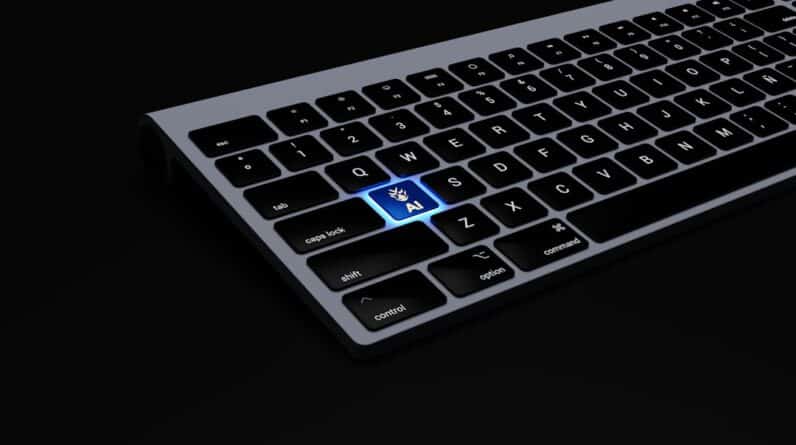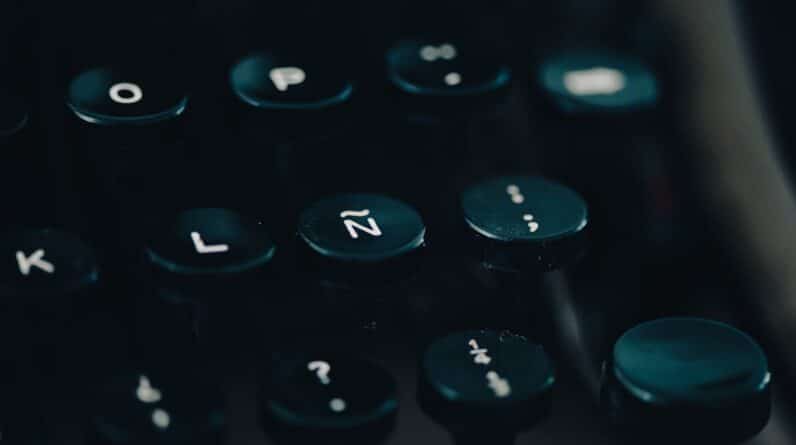As you delve into the world of comics, you may find yourself captivated by the vibrant illustrations and compelling narratives that bring characters to life. In recent years, artificial intelligence (AI) has emerged as a transformative force in this creative domain, reshaping how comics are conceived, created, and consumed. The integration of AI technologies into the comic industry is not merely a trend; it represents a significant evolution in artistic expression and storytelling.
By harnessing the power of machine learning and data analysis, creators are discovering new avenues for innovation, allowing them to push the boundaries of traditional comic-making. The intersection of AI and comics opens up a plethora of possibilities. From automating mundane tasks to generating intricate artwork, AI tools are becoming indispensable allies for artists and writers alike.
As you explore this fascinating synergy, you will uncover how AI is not only enhancing the creative process but also redefining the relationship between creators and their audiences. This article will take you on a journey through the various ways AI is influencing graphic novels, from character design to storytelling, while also addressing the ethical implications and future prospects of this burgeoning collaboration.
Key Takeaways
- AI is revolutionizing the world of comics by offering new tools and techniques for creators to explore.
- AI has the potential to streamline the graphic novel creation process, making it more efficient and accessible to a wider range of creators.
- Character design in comics is being influenced by AI, allowing for the creation of unique and diverse characters with the help of machine learning algorithms.
- AI-generated storytelling in graphic novels has the potential to offer new and innovative narrative possibilities, pushing the boundaries of traditional storytelling.
- AI is enhancing the reader experience in comics by offering personalized recommendations, interactive elements, and immersive storytelling experiences.
The Impact of AI on Graphic Novel Creation
Streamlining the Creative Process
AI tools can assist artists in generating backgrounds, coloring pages, and even suggesting layouts, significantly reducing the time spent on repetitive tasks. This newfound efficiency allows creators to focus more on the narrative and emotional depth of their stories, ultimately leading to richer and more engaging content.
Data-Driven Storytelling
Moreover, AI can analyze vast amounts of data from existing graphic novels to identify trends and preferences among readers. By understanding what resonates with audiences, creators can tailor their work to meet these demands more effectively.
Empowering Creativity and Commercial Success
This data-driven approach not only enhances the quality of graphic novels but also increases their chances of commercial success. As you witness this shift, it becomes clear that AI is not merely a tool for efficiency; it is a catalyst for creativity that empowers artists to explore uncharted territories in their storytelling.
AI and Character Design in Comics
Character design is a cornerstone of any successful comic, as it establishes the visual identity and personality of the protagonists and antagonists alike. With AI’s capabilities in image generation and manipulation, you can see how character design is evolving into a more dynamic process. AI algorithms can analyze existing character designs across various genres and styles, providing artists with inspiration or even generating entirely new characters based on specific parameters set by the creator.
This collaborative approach between human creativity and machine intelligence results in unique characters that might not have emerged through traditional methods alone. Furthermore, AI can assist in refining character designs by simulating how they would look in different scenarios or emotional states. Imagine being able to visualize your character’s expressions or poses in real-time as you adjust their design!
This level of interactivity not only enhances the creative process but also allows for a deeper exploration of character development. As you engage with these AI tools, you may find that your characters become more nuanced and relatable, ultimately enriching the reader’s experience.
AI-Generated Storytelling in Graphic Novels
Storytelling is at the heart of every graphic novel, and AI is beginning to play a pivotal role in shaping narratives. By analyzing successful story arcs and character interactions from countless graphic novels, AI can generate plot outlines or suggest dialogue that aligns with established tropes and themes. This capability can serve as a valuable brainstorming partner for writers who may be grappling with writer’s block or seeking fresh ideas.
You might find that collaborating with AI opens up new narrative pathways that you hadn’t considered before. However, while AI-generated storytelling offers exciting possibilities, it also raises questions about originality and authorship. As you explore this aspect of AI in comics, it’s essential to consider how much influence an algorithm should have over creative decisions.
The balance between human intuition and machine-generated suggestions will be crucial in ensuring that stories remain authentic and resonate with readers on an emotional level. As you navigate this evolving landscape, you’ll discover that the most compelling narratives often arise from a harmonious blend of human creativity and technological innovation.
The Role of AI in Enhancing Reader Experience
As a reader, your experience with graphic novels is deeply influenced by how stories are presented and how characters resonate with you. AI has the potential to enhance this experience in several ways. For instance, personalized recommendations powered by AI algorithms can help you discover new graphic novels that align with your interests and preferences.
By analyzing your reading habits and preferences, these systems can curate a selection of titles that you might not have encountered otherwise, enriching your reading journey. Additionally, interactive storytelling experiences are becoming more prevalent thanks to AI technology. Imagine engaging with a graphic novel where your choices influence the direction of the story or where characters respond dynamically based on your interactions.
This level of interactivity can create a more immersive experience that draws you deeper into the narrative world. As you embrace these innovations, you’ll find that AI is not just enhancing the content itself but also transforming how you engage with stories on a personal level.
Ethical Considerations in AI-Generated Comics
Copyright and Ownership Concerns
One significant concern revolves around copyright and ownership. As AI generates artwork or storylines based on existing works, questions arise about who holds the rights to these creations. If an artist collaborates with an AI tool to produce a comic, should they be credited solely for their input, or does the machine deserve recognition as well? These questions challenge traditional notions of authorship and intellectual property.
The Risk of Homogenization in Storytelling
Moreover, there is the risk of homogenization in storytelling as AI relies on patterns derived from existing data. If creators lean too heavily on AI-generated suggestions without infusing their unique voice and perspective, there is a danger that stories may become formulaic or lack diversity.
Advocating for Responsible AI Use in Comics
As you engage with this evolving landscape, it’s crucial to advocate for responsible use of AI in comics—one that respects artistic integrity while embracing innovation. By fostering discussions around these ethical considerations, you can contribute to shaping a future where technology enhances creativity without compromising its essence.
The Future of AI in Comics: Opportunities and Challenges
Looking ahead, the future of AI in comics is filled with both opportunities and challenges that will shape the industry for years to come. On one hand, advancements in machine learning and natural language processing promise even more sophisticated tools for creators. Imagine an AI capable of understanding narrative structure at a deeper level or generating artwork that mimics specific artistic styles with remarkable accuracy.
These innovations could lead to an explosion of creativity as artists experiment with new forms and genres. However, alongside these opportunities come challenges that must be addressed. The rapid pace of technological advancement raises concerns about job displacement within the creative workforce.
As AI tools become more capable, there may be fears that traditional roles within the comic industry could diminish or evolve beyond recognition. Striking a balance between embracing technology and preserving human artistry will be essential as you navigate this changing landscape. By fostering collaboration between human creators and AI systems, you can help ensure that both can coexist harmoniously while pushing the boundaries of what comics can achieve.
Embracing the Potential of AI in Graphic Novels
As you reflect on the impact of AI in comics, it’s clear that this technology holds immense potential for transforming the industry in profound ways. From streamlining production processes to enhancing character design and storytelling, AI is becoming an integral part of the creative toolkit for artists and writers alike. While challenges such as ethical considerations and job displacement loom on the horizon, embracing this technology can lead to exciting innovations that enrich both the creative process and reader experience.
Ultimately, the future of graphic novels lies in finding a harmonious balance between human creativity and artificial intelligence. By leveraging the strengths of both realms, you can contribute to a vibrant landscape where stories are told in new and imaginative ways. As you continue your journey through the world of comics, remain open to the possibilities that AI presents—after all, it may just be the key to unlocking new dimensions of storytelling that captivate audiences for generations to come.
There is a thought-provoking article on what will happen to humans if AI takes over that delves into the potential consequences of artificial intelligence becoming dominant in society. This article raises important questions about the future of humanity in a world where AI plays a significant role. It is a fascinating read that complements the discussion on the future of graphic novels and how AI may impact the creative process in the comic industry.
FAQs
What is AI in comics?
AI in comics refers to the use of artificial intelligence technology in the creation, production, and distribution of graphic novels and comic books. This can include AI-generated artwork, automated storytelling, and personalized reader experiences.
How is AI being used in graphic novels?
AI is being used in graphic novels in various ways, such as generating artwork, assisting in the storytelling process, and creating personalized reading experiences. AI can also be used to analyze reader preferences and behavior to tailor content to individual tastes.
What are the potential benefits of AI in comics?
The potential benefits of AI in comics include increased efficiency in the creation process, the ability to generate unique and personalized content, and the potential to reach new audiences through innovative storytelling techniques.
What are the potential drawbacks of AI in comics?
Some potential drawbacks of AI in comics include concerns about job displacement for artists and writers, the potential for AI-generated content to lack the human touch, and ethical considerations surrounding the use of AI in creative industries.
What does the future hold for AI in graphic novels?
The future of AI in graphic novels is likely to involve further advancements in AI-generated artwork, more sophisticated storytelling algorithms, and the integration of AI into the distribution and marketing of graphic novels. Additionally, AI may play a role in creating interactive and immersive reading experiences for audiences.






